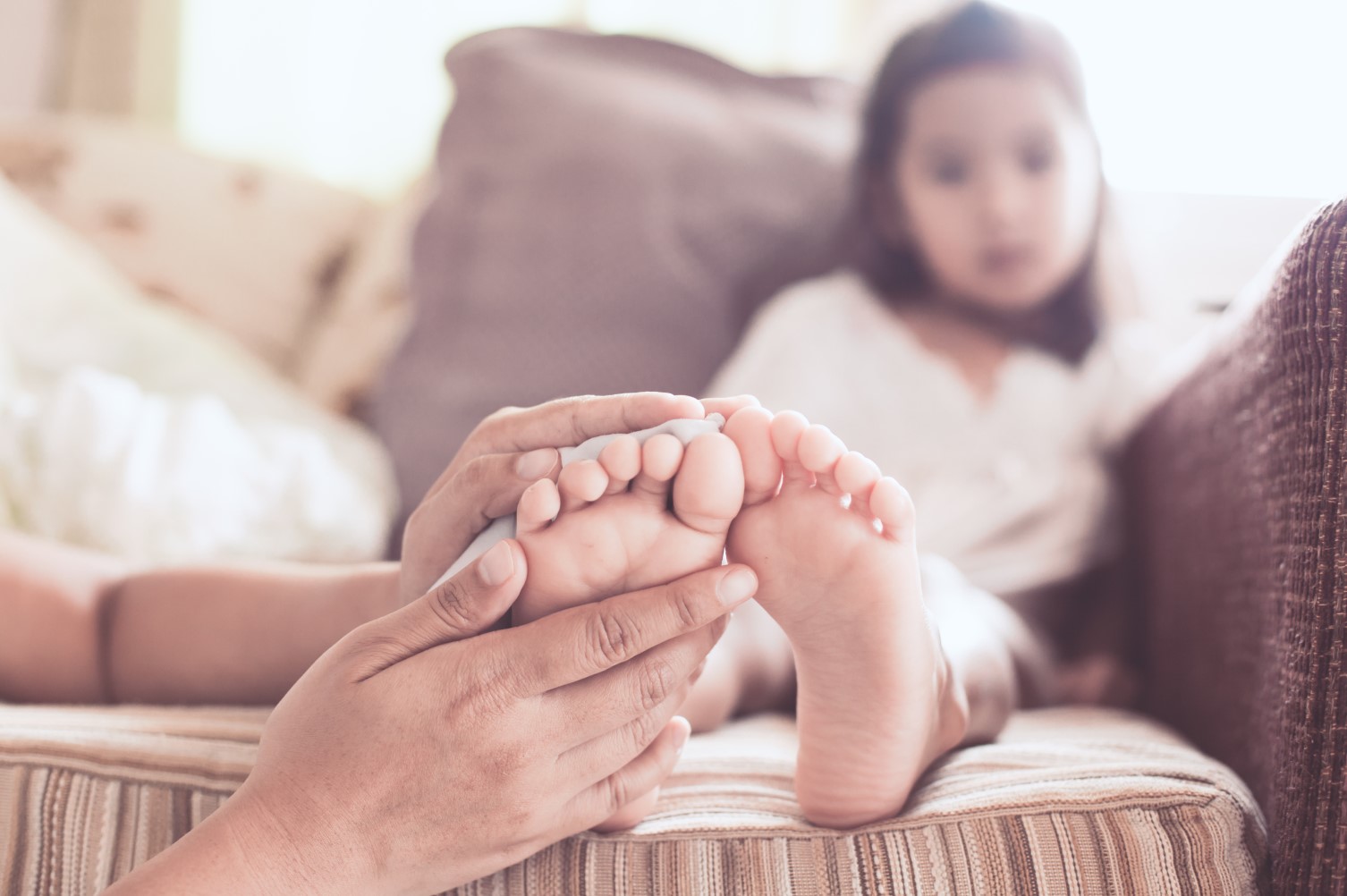
If your child has diabetes, it’s important to know that any foot problems such as calluses, blisters or simple cuts and scrapes can be more serious than they would be for a non-diabetic child. However, by looking after your child’s feet well and taking the advice of their healthcare team, you can help to avoid unpleasant complications and keep your child healthy and happy.
On top of the techniques listed below, if your child has diabetes you should make a point of performing a daily foot check to spot any injuries or infections sooner rather than later. The Ipswich Touch Test not only helps you to catch problems before they become more serious, but it can also help you to monitor things such as touch sensitivity in your child’s feet - something that can decrease as a result of diabetes.
Below we’ve compiled a list of tips and techniques to use in order to reduce the likelihood of foot problems and complications for your child. Diabetic or not, these habits are good to get into for any child to encourage healthy and strong feet.
Trimming children’s toenails can be tricky, particularly if they like to wriggle! But it’s vital to be careful when cutting toenails as any puncture of the skin - even a tiny one - can become infected and lead to nasty complications.
When trimming your child’s toenails, make sure to cut them straight across the end, without cutting down the sides of the nail. Aim for a square-ish shape at the end of the nail, and use a file to soften sharp edges and corners to avoid snags and cuts. Don’t cut them too short either, as this can leave the vulnerable skin underneath, known as the quick, unprotected. Leaving a couple of millimetres of white at the end of the nail is usually enough to avoid unnecessary pain while keeping the nails short and neat.
If your child is old enough to cut their own nails, consider coaching them in the best method to make sure they’re doing it safely.
It’s also important to check the fit of your child’s shoes and socks regularly to make sure they aren’t too small. Children’s feet grow quicker than many people realise, and if their shoes or socks are too small, this can rub and lead to problems such as corns, calluses and blisters. These problems can be more serious if your child has diabetes.
It’s vital that you make sure the shoes your children wear most fit well first of all, so check the fit of any school shoes regularly. Any trainers or slippers that are worn frequently in their free time should be the next items of priority.
For other, less frequently worn footwear such as formal shoes or those that are out of season, it’s best to wait and check the fit closer to the next time they’ll be used. This is because your child can easily outgrow them before the next relevant event comes around. However, make sure to check a week or two in advance so that you have time to shop for a new pair of shoes if the old ones don’t fit.
When you shop for new shoes, whatever the reason, make sure you choose a good-quality shoe with a supportive structure to protect your little ones’ feet. This helps to avoid problems with foot posture, such as supination or overpronation, helping your child’s feet to develop as they should. It also helps to reduce the likelihood of other foot problems and injuries caused by shoes that aren’t built effectively - as well as making it more likely the shoes will last long enough for your child to outgrow them!
Dry skin on the feet can easily lead to cracked heels and other unpleasant conditions, so it’s important to keep your child’s feet hydrated and moisturised. Using a moisturiser every day after washing the feet helps to lock in hydration, keep your little one’s feet smooth and healthy and avoid dry feet.
Top tip! Never moisturise the gaps between your child’s toes, also known as the interdigital spaces. With excess moisture, these areas can become affected by fungal infections such as athlete’s foot or a fungal nail infection. Instead, just make sure the areas are clean and pat them dry with a towel.
Finally, the best thing you can do if you have any questions about your child’s foot health is to speak to a healthcare professional. Your child’s diabetes care team may have a foot specialist, also known as a podiatrist, who can help you with everything you need to know about diabetic foot care, or they’ll be able to point you in the direction of the information and advice you need.
Author: Click Consult, published 21-02-2024.